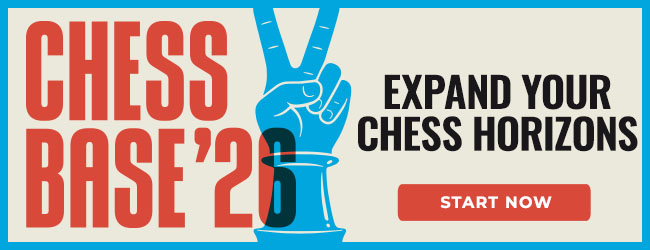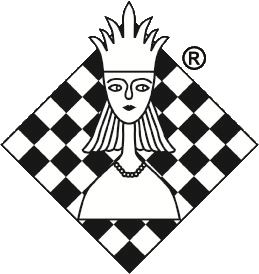Proposal of a Pilot Project with an Enhanced Score System
Open Letter by Arno Nickel (ICCF GM)
to the International Correspondence Chess Federation (ICCF)
Berlin, June 15th, 2015
 Summary: For some time now there has been considerable unrest in the Correspondence Chess scene. The growing dominance of computers, which started in the early days of Fritz & Co., has led to considerable uncertainty. For some computers are a curse of modern day technological progress, for others they are a creative blessing.
Summary: For some time now there has been considerable unrest in the Correspondence Chess scene. The growing dominance of computers, which started in the early days of Fritz & Co., has led to considerable uncertainty. For some computers are a curse of modern day technological progress, for others they are a creative blessing.
Certainly the importance of correspondence chess games for openings theory cannot be denied. Never before has research in progressed so fast in the Sicilian, French and Slav openings – to name just a few. Correspondence chess games provide high-level practical tests for openings ideas. But correspondence chess itself is paying a high price for this development: the quota of draws is continually rising. Currently between 80% and 90% of all games in the top tournaments are drawn.
Two months before the ICCF Congress in Cardiff (16-22 August 2015) the well-known Berlin-based chess author and publisher Arno Nickel, himself a leading CCGM, is drawing attention to the problem – and proposing an interesting solution: do not mechanically score every draw with half a point. If a player is able to stalemate the opponent, or ends the game with a minor piece against the bare king, then this player should receive ¾ of a point, while the opponent only receives ¼ point. Nickel draws his inspiration from old ideas presented by Lasker und Réti.
Dear Chess Friends,
Being one of the leading international correspondence chess players, I should like to initiate a productive discussion in the run-up to the ICCF Congress in Cardiff, Wales (Aug. 16 through Aug. 22, 2015) on the issue of the continuously rising percentage of drawn games. Given that there is no such thing as a members’ forum, I have decided to choose this way of a circular letter by e-mail.
I have devoted myself to this issue for quite a while now and, therefore, I believe that I can make a difference with a pertinent contribution. At the same time, however, I think it is important to obtain a comprehensive set of opinions from the members. This aim is intended to be achieved by a survey directed at all ICCF members who are interested in this subject.
On the question of how the “draw issue” should be assessed, and indeed if there is an issue to be addressed at all and if so, how this should be done, opinions tend to vary widely, but based on many individual discussions, my impression is that there are two fundamental trends. On the one hand, there are those who want to change something and make a difference, while on the other hand, there are those who are generally sceptical of change thinking along the lines of “There will be no changes, anyway. After all, the computers have a tight hold on correspondence chess.” It is exactly this attitude, I should like to counter today with a very specific initiative.
It is my firm belief that the ever rising average percentage of draws in the whereabouts of currently approximately between 80 and 85 per cent in higher and top level play will have a negative impact on the overall appeal of correspondence chess because the concept of competition is being eroded. Commitment and willingness to perform are being rendered more and more futile and at least appear ever less worth the while if in the end, all the effort results in a draw between two opponents who are electronically armed to the teeth. What catches the eye is the fact that even in big tournaments with 15 or 17 players, more and more players are to be found who draw all or nearly all of their games while the seemingly unattainable tournament victory would have required only one or two wins against weaker or indisposed opponents. Everybody can imagine where this trend will lead us if it continues unabated.
Please take note of the following current overview of the last World Championship Finals and Candidates’ sections which is being provided as proof for the abovementioned draw ratio of 80% to 85%:
| Tournament |
Start |
Draw ratio
|
Number of games
|
Ongoing
|
| WC 26 Final |
10.06.2010 |
81.5%
|
110 of 135
|
1
|
| WC 27 Final |
10.06.2011 |
88.2%
|
120 of 136
|
-
|
| WC 28 Final |
10.06.2013 |
90.1%
|
109 of 121
|
15
|
| WC 31 /ct01 |
10.09.2011 |
82.0%
|
64 of 78
|
-
|
| WC 31 /ct02 |
10.09.2011 |
75.6%
|
59 of 78
|
-
|
| WC 31 /ct03 |
10.09.2011 |
82.0%
|
64 of 78
|
-
|
| WC 31 /ct04 |
10.09.2011 |
79.5%
|
62 of 78
|
-
|
| WC 31 /ct05 |
10.09.2011 |
83.3%
|
65 of 78
|
-
|
| WC 31 /ct06 |
10.09.2011 |
84.6%
|
66 of 78
|
-
|
| WC 32 /ct01 |
20.09.2012 |
84.9%
|
101 of 119
|
1
|
| WC 32 /ct02 |
20.09.2012 |
67.5%
|
81 of 120
|
-
|
| WC 32 /ct03 |
20.09.2012 |
78.0%
|
92 of 118
|
2
|
| WC 33 /ct01 |
20.09.2013 |
84.7%
|
61 of 72
|
6
|
| WC 33 /ct02 |
20.09.2013 |
81.3%
|
61 of 75
|
3
|
| WC 33 /ct03 |
20.09.2013 |
84.9%
|
62 of 73
|
5
|
| WC 33 /ct04 |
20.09.2013 |
90.7%
|
68 of 75
|
3
|
This corresponds to an average draw ratio of 82.3% on the basis of 1512 games, with a trend towards 85% - 90%.
Against this background, I should like to propose to the ICCF a pilot project with an enhanced score system and a modified drawing score.
Approach: Enhanced Score System with Modified Drawing Score
Every chess player knows the situation where you have more or less outplayed your opponent but finally, you simply cannot accumulate enough ascendancy in order to be able to deliver checkmate. In the end, having a bishop or a knight more will not do in an ending – you will need to be up a full rook. Such a decisive advantage, however, is becoming ever rarer in correspondence chess if good or at least alert players battle each other. Strain as the players might in order to gain an advantage – in the end, all that counts is checkmate. All other kinds of advantages, big or small, being a piece up or a pawn up against the naked king… they all fall through the coarse screen of the score system. All endeavours to convert the hard-earned advantage to a full point, be it a material advantage or a strong initiative, will at the end of the game declared null and void, and the performances rendered will be rated in the same manner as in the case of a dull draw.
About one hundred years ago, the first to point out this problem was the World Champion at the time, Dr. Emanuel Lasker. He put forth the very interesting proposal to enhance the scale of values for determining game results by returning more or less to the ancient form of chess. In this system, the idea is to also acknowledge and reward a partial success below the level of an advantage required for delivering checkmate. (1)
Although being an old proposal, which at the time was supported by many grandmasters but never put to practice (the most arduous proponent being Richard Réti (2) who regrettably died at a young age), it is indeed very topical today in that it calls for more differentiation of the performances delivered. While in any sports, hundredths of a second or subjective evaluations given by judges determine sports performances, chess has always been and remained rather unwieldy in terms of differentiation of performance. In over-the-board play, this may be perceived less as a shortcoming because it is more prone to errors (even though here, too, there is some rumbling and howling from time to time); in correspondence chess, however, where the playing strength has been levelled to a great extent in recent years (regardless of whether or not this levelling has been brought about artificially due to the players’ use of chess engines), there will be an ever louder call for alternatives in the long run.
|
Therefore, I specifically suggest enhancing the score system to include a ¾ point
for a performance with an added value as compared to a regular draw:
a) stalemating the opponent;
b) being a piece up against the naked king.
Conversely, the weaker side should be awarded only ¼ point in these cases. |
Such a rule assesses for the first time in a more refined manner a number of common draws the defender often bails out into. Saving the game in this way would still be possible and desirable as compared to a full loss, but such a save would not be scored on par with the opponent’s performance, anymore. (3)
The ending of king + pawn vs. king can be regarded as the basic form of an advantage which is sufficient for stalemating the opponent. In nearly all cases where the pawn cannot be promoted, the attacker has at least the option of forcing stalemate by means of zugzwang. And this advantage, which is usually the result of hard work and rarely occurs by mere chance, deserves the acknowledgement of being expressed in the tournament table. The same is true if one player is one knight or one bishop up against the mere king although, strangely, the surplus material is not sufficient for enforcing stalemate in this case. Introducing such an enhanced scale of values and/or points would not deprive chess of anything but, on the contrary, would rather make it richer, as was correctly pointed out by Lasker. Both players have thus additional strategic options in a game of chess while the traditional objectives of delivering checkmate or maintaining a full balance continue to exist as they did before. The most frequent kind of draw in practical play – repeating a position three times or a consensual agreement of a draw, which amounts to the same thing – would not be affected by this additional rule and experience suggests that it would remain to be the kind of draw occurring most often.
There have been concerns that such an intervention into the set of rules could change the essence of the game. Apart from the fact that neither Lasker nor Réti nor other proponents considered such a concern well-founded, it could well be argued whether or not Chess960, which has already been accepted by both FIDE and ICCF, constitutes a much more severe intervention into the set of rules. However, questions like this cannot be answered on an objective basis because in the end, they are value-based judgements – for one player, the classic starting position is part of the essence of chess while for the next player, the very same starting position is more of an obstacle standing in his way of playing creative chess.
The so-called three points rule where a win is favoured over two draws, which are only worth one point each, strikes me as wholly inadequate. This rule may work in sports like football but in chess, and especially in correspondence chess, it creates an artificial and empty pressure at best, not to mention possible cases of unfairness and potential game manipulations in team or double round robin events.
Another suggestion brought forward from time to time, is shortening the time limits in order to increase the pressure on the players thereby raising the number of mistakes, but this idea does not correspond to the traditional self-conception of correspondence chess, either.
| In order to gain experience with the enhanced score system and to test in practical play how such a change would affect correspondence chess as such, I suggest organising an invitational tournament with 15 players as a pilot project. |
The participating players and the time conditions should be in line with the usual requirements for international ICCF tournaments, while at the same time, it should be attempted to achieve the highest possible tournament category.
Being the initiator of a tournament of this kind, which I would dedicate to the former World Chess Champion Dr. Emanuel Lasker, I would undertake every effort to raise an attractive prize fund. Another special feature of the tournament could be the invitation of one or a few over-the-board grandmaster(s). Recommended start date of the tournament: 01/01/2016.
In order to receive a comprehensive set of opinions from correspondence chess players, I should like to ask them to complete the attached survey and return it to me via e-mail (or by post, if preferred).
Best regards,
Arno Nickel (ICCF GM)
Notes
1 cf. Wiener Schachzeitung 8/1929, p. 118; quotation of an article written by Lasker in 1917.
2 R. Réti, Die neuen Ideen im Schachspiel, Vienna 1922; cf. Ch. 20 „Die Reform des Schachspiels“. See also on this topic: A. Nickel, Die Unbesiegbaren – Dem Fernschach droht der Remistod (PDF), series of articles in the chess magazine SCHACH 7/8/10, 2013.
3 Unfortunately, English GM Nigel Short’s suggestion to do away with stalemate altogether cannot be discussed here but I think less of it (cf. discussions on the ChessBase website).
Illustrative examples: ¾ or ½ point?
|
1) Stalemate win ¾ – ¼

Black to move (±)
|
|
2) Win vs. bare king ¾ – ¼

Black or White to move (±)
|
|
3) Stalemate win ¾ – ¼

White to move (±); 1.Kxf3 or 1.Bxf3
|
|
4) Perpetual check ½ – ½

Black to move (=)
|
|
5) Fortress ½ – ½

Black or White to move (=)
|
|
6) Philidor position ½ – ½

Black or White to move (=)
|
Post Scriptum
I tried to be as brief as possible but I think the following four additional points should not go unmentioned.
1. Doesn’t the introduction of the ¾ points rule bear the danger of diluting the essence of chess by giving up its real idea – delivering checkmate – in favour of minimalistic strategies?
This objection has to be taken very seriously but analysis of positions and a number of practical tests have convinced me that such an undesirable “side effect” is not to be feared on a general basis. Firstly, it has turned out that it is very difficult to achieve an advantage sufficient for a ¾ point when playing against an alert opponent. In fact, it is nearly as difficult to achieve as a checkmate win and indeed requires serious mistakes by the opponent. In my experience, mistakes like this tend to occur more often on a complex and unclear battlefield than in a dry positional setting, i. e. in positions where both players need to take certain risks and solve big problems. Moreover, being a pawn up, for example, does not constitute too big an advantage as such unless you have additional plusses like positional advantages or a strong initiative. Therefore, the player with an advantage cannot convert his additional pawn in a simple rook ending if the opponent has reached the Philidor position and defends his position in the correct manner (cf. example 6 on page 10). Even with the ¾ point rule, this ending still is a straightforward draw. Therefore, I believe that the intrinsic dynamics of the game of chess would continue to offer a full-bodied fight if this is what at least one of the players wants to achieve. It is the idea of the pilot project, however, to show on the basis of 105 correspondence games which of these assumptions will be vindicated in the end.
2. By how much will the percentage of drawn games probably be reduced once the ¾ points rule has been introduced?
This question is very difficult to answer, indeed, because as of now, the players do not have any experience with this rule. Roughly speaking, I expect that on average one out of ten previous drawn games would in future be half victories. Statistically, this appears to be not many games at first but if you consider the extremely high ratio of drawn games of 80% - 85% on average, it would indeed make a significant difference. Most of all, however, I assume (and I consider this at least equally important) that a positive effect would be obvious in the games as such, i. e. in the way they will be fought and in the excitement they will produce. And finally, even a low number of games with ¾ points and ¼ points, respectively, could be more satisfying in terms of a tie break as compared to the existing auxiliary means.
3. Isn’t it necessary to consider other steps, too, in order to address the “draw problem”?
I have left this issue open and included it in the survey. I did, however, touch upon a few steps I do not think highly about and I mentioned in passing Chess960, which I am quite fond of, by the way (e. g. in the 1st ICCF World Cup), without really discussing this issue. It seems to me that Chess960 is a good addition to the current armoury of tournaments being offered, but that it is not a replacement for classical chess, i. e. chess with the classical starting position. I think we should be open for new ideas but so far, none of those have convinced me. In addition, banning draw offers altogether appears to be futile and inappropriate in correspondence play – as opposed to over-the-board chess. In correspondence chess, it is all too easy for two draw-loving players to thwart such a rule, rendering it rather useless. Moreover, I don’t think it would be appropriate to “sentence” players to compulsory labour in a dull drawn position. A better idea could be considering and reviewing the concept of banning perpetual check or a repetition of moves (similar to Chinese or Japanese chess or partially also Go). However, the whole idea would need to be reviewed and clarified on the basis of in-depth chess theoretical considerations.
4. Which consequence would introducing the ¾ point rule have for the use of chess engines?
Generally speaking, chess engines can be modified in such a manner that they will in the end provide excellent analytical results, even under these changed circumstances. It will take some time, however, until appropriate and sufficiently tested updates of these programmes will be available and besides the calculating processes could be significantly slowed down due to the more complex setting. Apart from these considerations, it is the human player who should benefit from this change of rules because weighing the pros and cons of the different options in a game (“What kind of attacking plan or defensive strategy should I choose?”) are among the humans’ core skills. Otherwise, it would indeed only be the machines playing against one another, as the critics of correspondence chess never get tired of mentioning.
Survey
The recipients of this circular letter are being asked to participate in the following e-mail survey and to forward it to other ICCF members whom they know and who could be interested in this subject. The survey is carried out anonymously. It will be distributed both in German and in English. It is not a formal survey and it does not claim to be representative. Nevertheless, it can point towards certain opinion trends if there is an adequate participation quota.
Among the answers, there are always three options: Yes / No / Abstention.
Please copy the following questions into an e-mail to the sender
and insert your answers to the questions into the intended spaces!
Question 1: Do you think that the rising percentage of drawn games is a major problem for cor-respondence chess?
Answer:________________
Question 2: Do you consider the rising percentage of drawn games an unavoidable side effect of correspondence chess we should better accept instead of doing something against it?
Answer:________________
Question 3: Do you support the pilot project with an enhanced score system?
Answer:________________
(If yes, do you want to be named publicly? ICCF member no.___________)
Question 4: Should the ICCF consider other steps instead of the pilot project? If you prefer other steps, please write down in a few keywords (or more comprehensively, if you prefer) which steps you have in mind.
Answer:________________
Question 5: Should the ICCF consider additional steps apart from the pilot project? If you are in favour of additional steps, please write down in a few keywords (or more comprehensively, if you prefer) which steps you have in mind.
Answer:________________
Please send your reply by July 31, 2015, to: arnonickel@t-online.de. If you want to send your reply by post, please use the following address: Arno Nickel, c/o LASKER'S, Sophie-Charlotten-Str. 28, D-14059 Berlin.
All replies received will be recorded in an anonymised excel file, which each participant can receive on request along with a pertinent analysis.
Correspondence chess database
|
 Corr Database 2013 is an extensive collection of correspondence games, featuring classical correspondence games played by mail as well as email games. The CD contains 1,041,845 games from 1804 until 2012 including all games of the correspondence chess world championships 1-23, correspondence chess olympics 1-17, correspondence chess european championships, national chamionships (AUS, CSR, DEN, GER, NED, USA). Corr Database 2013 is an extensive collection of correspondence games, featuring classical correspondence games played by mail as well as email games. The CD contains 1,041,845 games from 1804 until 2012 including all games of the correspondence chess world championships 1-23, correspondence chess olympics 1-17, correspondence chess european championships, national chamionships (AUS, CSR, DEN, GER, NED, USA).
Corr 2013 also features a correspondence chess playerbase, which includes about 71,000 names. A must for every player of correspondence chess!
- ISBN 978-3-86681-344-1
- Delivery: download, post
- Price: €99.90 €83.95 without VAT (for customers outside the EU)
Order Corr Database 2013 here
|
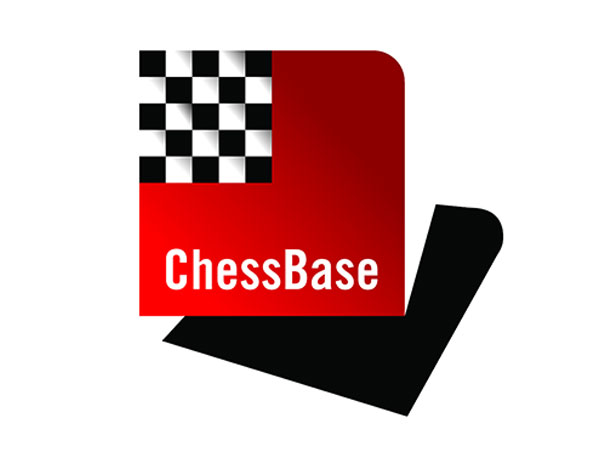














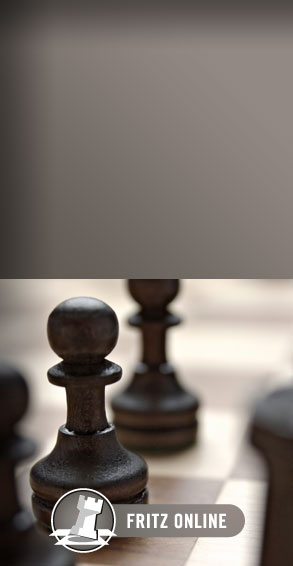

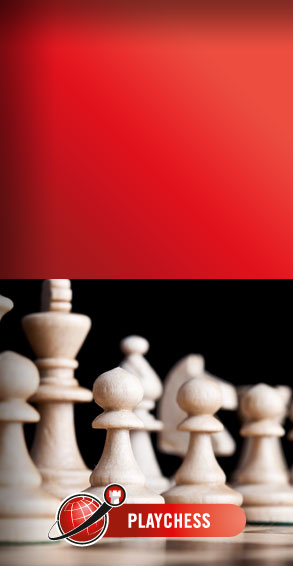
 Summary: For some time now there has been considerable unrest in the Correspondence Chess scene. The growing dominance of computers, which started in the early days of Fritz & Co., has led to considerable uncertainty. For some computers are a curse of modern day technological progress, for others they are a creative blessing.
Summary: For some time now there has been considerable unrest in the Correspondence Chess scene. The growing dominance of computers, which started in the early days of Fritz & Co., has led to considerable uncertainty. For some computers are a curse of modern day technological progress, for others they are a creative blessing. 